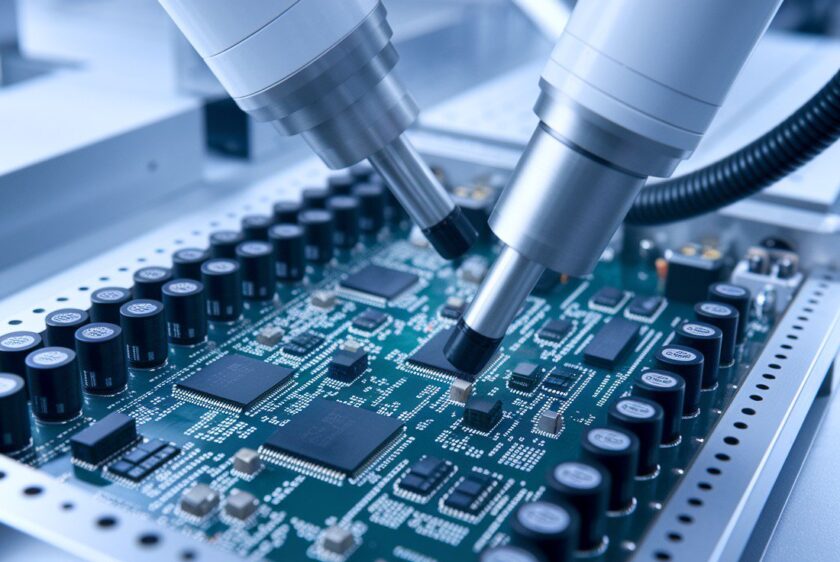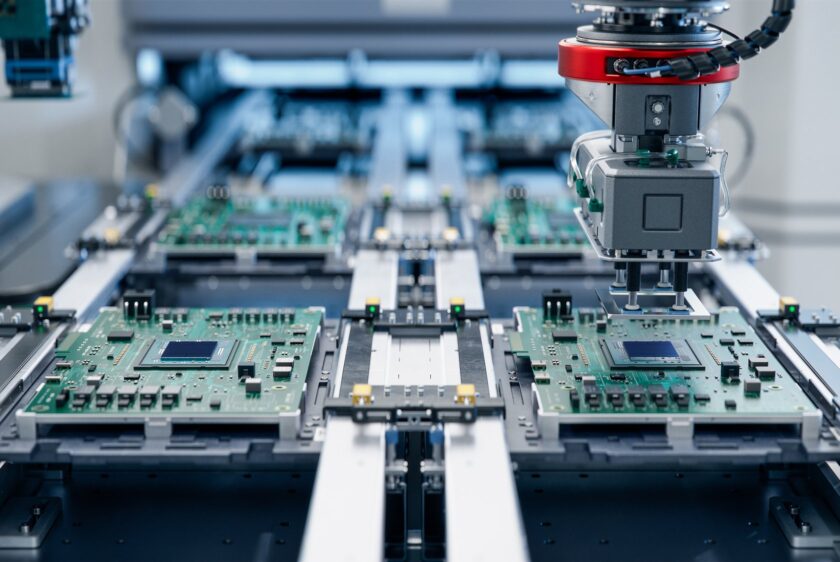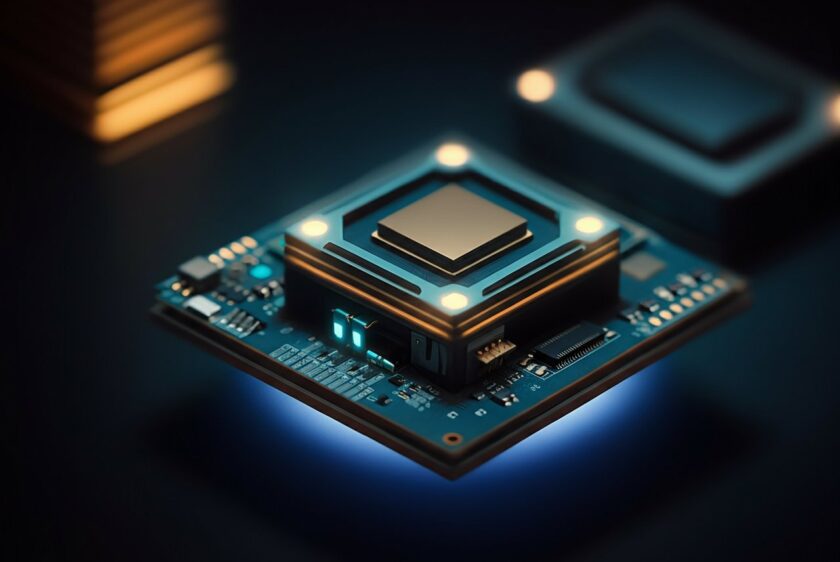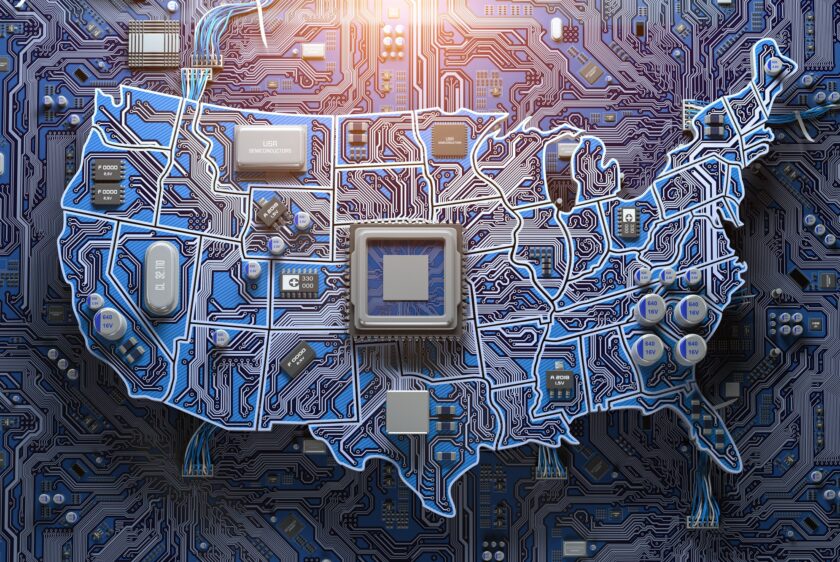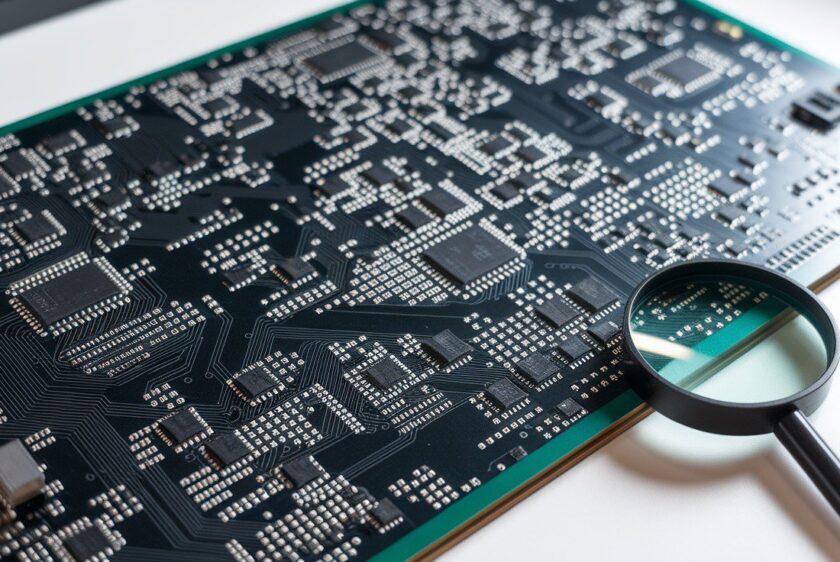
In today’s evolving electronics manufacturing landscape, staying competitive requires more than just precision and efficiency—it demands adaptability and innovation. Nowhere is this more evident than in high-mix, low-volume (HMLV) PCB assembly, where manufacturers must navigate constant variability and tight turnaround demands, balancing design constraints and overcoming potential design issues.
Artificial intelligence (AI) is rapidly becoming a core enabler of that agility. At Electro Surface Technologies (EST), AI integration is reshaping how we approach complexity, quality, and speed during the PCBA design phase of high-mix PCB manufacturing. This article explores the unique challenges of high-mix production, how AI-driven systems are solving them, and why EST is positioned as a leader in this shift.
The Challenges of High-Mix PCB Assembly
High-mix, low-volume production is characterized by frequent product changeovers, varied component types, and tight compliance constraints. It’s ideal for sectors like defense, aerospace, and MedTech, but inherently difficult to scale without smart automation.
Here are the most common challenges:
1. Configuration Complexity
Each new PCBA design introduces new layout constraints, bill of materials (BOM) variations, and test protocols, further complicated by the need to prevent human error. This forces frequent machine recalibration, risking setup delays and human intervention.
2. Operational Flexibility
Rapid changeovers between product types require a flexible, responsive production environment. Technicians and systems must adapt to shifting component footprints, soldering profiles, and inspection criteria, ensuring there are no missing components.
3. Demand for Precision
In regulated industries, quality standards are non-negotiable. A misplaced component, poor solder joint, or overlooked design flaw can compromise device functionality, lead to costly rework, or trigger compliance issues related to electromagnetic and signal interference.
These demands highlight a simple truth: high-mix PCB manufacturing requires more than skilled labor. It requires smart systems that can scale with complexity without sacrificing control or optimal performance.
How AI Improves High-Mix PCB Assembly
Artificial intelligence addresses the inherent variability and complexity of HMLV production by introducing automation that learns, adapts, and improves in real time. AI-driven solutions support each stage of the PCB manufacturing process with precision placement tools and digital twins.
1. Automated Quality Control with AI Vision
AI-powered image recognition systems, using deep learning algorithms, surpass human inspection by detecting subtle defects in real time. They efficiently identify solder bridges, component misplacement, insufficient paste, and more across hundreds of SKUs.
Impact:
- Reduced false positives and escapes
- Streamlined quality assurance without slowing production
- Improved first-pass yield in high-complexity builds
Example:
At EST, AI-supported automated optical inspection (AOI) is deployed across surface-mount and final inspection lines, delivering consistent, documented quality for every board—regardless of lot size.
Predictive Maintenance with Machine Learning
AI algorithms continuously monitor machine performance—temperature variations, vibration signatures, or cycle trends—to detect anomalies before they result in failure, preventing issues in surface mount lines and reducing dependency on human expertise.
Benefits:
- Reduces unplanned downtime and soldering defects
- Increases asset utilization
- Minimizes emergency repairs and part shortages
Example:
Surface mount lines at EST now operate with predictive alerts for pick-and-place heads and reflow ovens, helping maintenance teams schedule proactive intervention without disrupting throughput.
Optimized Scheduling for Agile Production
Deep learning models analyze historical production data, current inventory, job complexity, and deadline constraints to optimize scheduling, addressing manufacturing constraints effectively.
Capabilities Include:
- Real-time schedule optimization across work centers
- Balancing of production load by complexity and volume
- Faster quote-to-production timelines
Example:
For customers with multiple SKUs under tight delivery windows, EST uses AI to dynamically adjust schedules, prioritize builds based on part availability, and communicate real-time progress to stakeholders.
AI-Enabled Design for Manufacturability (DFM)
One of the highest-impact use cases for AI lies upstream: helping engineers identify design risks early in the product lifecycle, particularly during the PCBA design phase.
Functions:
- Design rule validation and routing strategies
- BOM conflict analysis
- Solder joint optimization
- Feedback on layout constraints and component specifications
Outcome:
Boards move from prototype to production with fewer revisions, smoother NPI handoffs, and lower risk of midstream change orders.
Example:
EST supports its startup partners with AI-driven DFM analysis during early prototyping—ensuring product feasibility before capital is committed to tooling or compliance audits.
EST’s AI-Driven Manufacturing Framework
At EST, AI is not an overlay—it’s embedded in how we build. Our systems integrate across inspection, scheduling, production, and compliance to support customers in regulated, high-risk environments such as the electronics industry.
Key Capabilities Include:
- Integrated AOI and X-ray inspection, powered by adaptive vision systems
- Predictive maintenance systems tied into MES dashboards
- Digital feedback loops from design through production with real-time design rule checks
- Compliance-ready process traceability for ISO 13485, ITAR, and FDA
We don’t deploy AI to replace skilled operators. We use it to elevate precision, reduce cognitive load, and ensure scalable execution across complex programs.
Partnerships that Prioritize Agility
EST works directly with venture-backed startups, MedTech innovators, and national defense programs to build custom manufacturing solutions tailored to high-mix requirements, effectively detecting counterfeit components and maximizing design accuracy.
AI enables us to deliver:
- Scalable small-batch production
- Continuous design iteration support
- Fast cycle prototyping and pilot manufacturing
- Compliance documentation across every lot
The Road Ahead: AI and the Future of Electronics Manufacturing
AI is just getting started. As manufacturing enters the next evolution—Industry 4.0—the possibilities are growing:
1. Enhanced Decision-Making
AI will drive richer operational insight through vQI systems (visual quality intelligence), machine learning dashboards, and real-time anomaly detection.
2. Greater Automation
Manual processes will give way to autonomous systems, particularly in pick-and-place, stencil cleaning, inline testing, and selective solder, reducing the chance of missing components.
3. Digital Twins
AI-powered digital replicas of physical manufacturing lines will allow teams to test configurations, simulate production impact, and optimize throughput before committing to change.
4. Sustainability by Design
Energy management systems powered by AI will optimize thermal load, power draw, and waste, while ensuring electromagnetic and signal interference thresholds are controlled.
Final Word: Strategy, Not Just Speed
Artificial intelligence isn’t about replacing people. It’s about enabling better outcomes with fewer errors and faster feedback.
At EST, AI is a system-level strategy. We embed it across operations to meet the demands of high-mix, low-volume production—without compromising flexibility, compliance, or quality.
For innovators building in defense, aerospace, and MedTech, the road to scalable, precision manufacturing now runs through AI. And we’re here to lead it.



